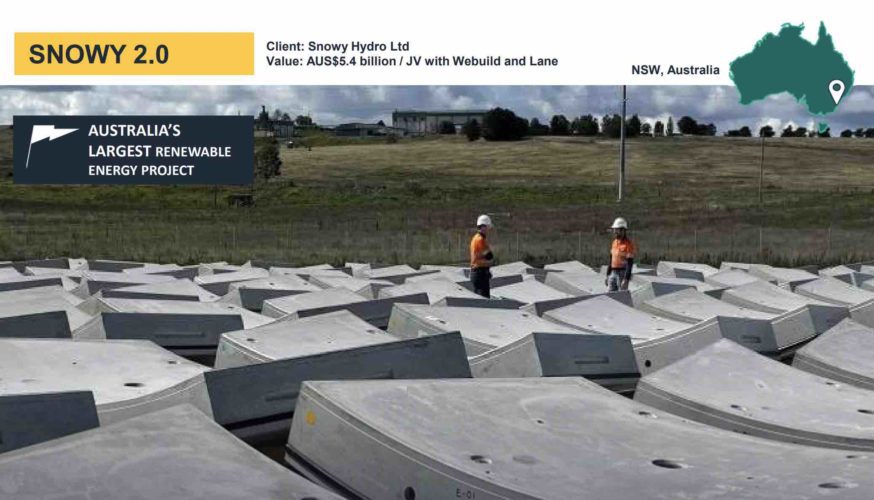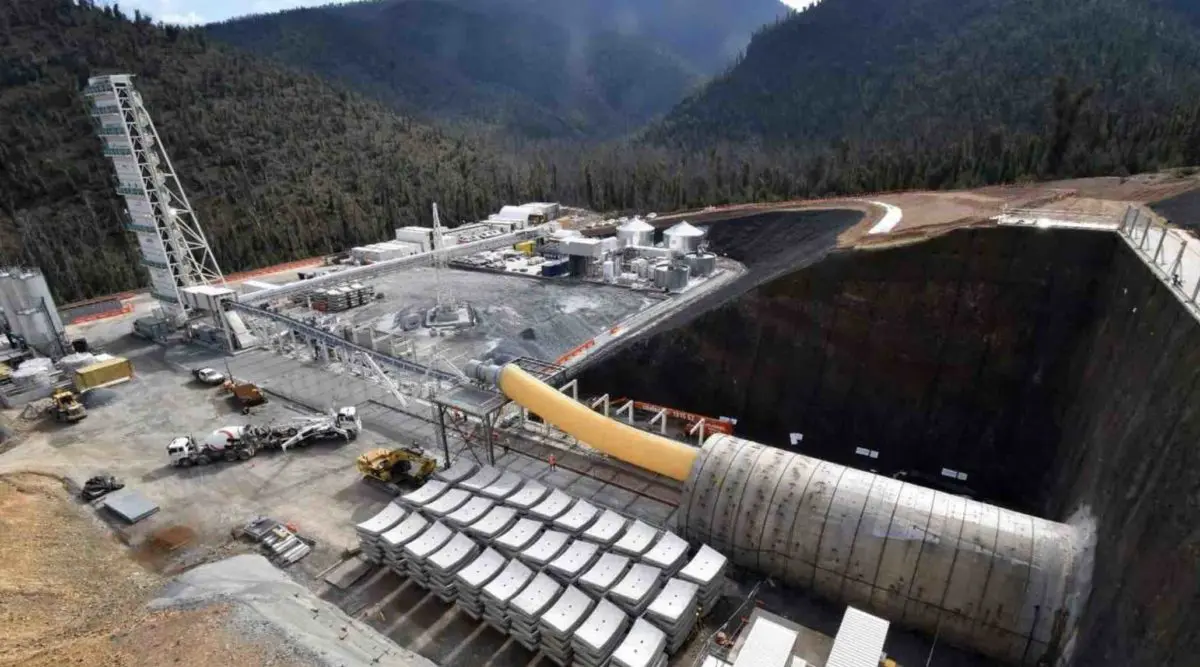One of the major contractors for the Snowy 2.0 pumped hydro project has confirmed delays of up to 18 months and yet more cost blowouts to Australia’s biggest – and most controversial – renewable energy project.
The revelations were made in late June in a presentation to South African analysts by Murray and Roberts, the listed owner of engineering firm Clough, one of the key contractors to the massive project where costs have already blown out to more than $5 billion.
“Unfortunately, everything has been impacted with COVID, with resourcing, with supply chain. And so, we’re anticipating about an 18 month impact to the project schedule,” Clough MD Peter Bennett told the analysts briefing, according to a transcript posted on the company’s website.
Bennett also said the “client has communicated” the delay to the market. Which is only true of the client’s owner, the federal government – energy minister Chris Bowen revealed the delay soon after his appointment – but Snowy Hydro itself has sought to play down the delays.
On Friday, Snowy Hydro’s CEO of the last nine years Paul Broad abruptly resigned amid ongoing concern about the fate of Snowy 2.0 and its equally controversial Kurri Kurri gas generator in the Hunter Valley.
Some media reports suggested Broad may have been pushed by the board at the instruction of Bowen. This was denied by the Snowy Hydro chair, the ex Santos boss David Knox, but Broad said separately he had no choice but to resign because of differences with Bowen over certain issues.
One of these differences is the Labor’s government push to convert the Kurri Kurri gas generator being built in the Hunter Valley into hydrogen. Broad said it “made no sense” because there is “no chance of hydrogen” being produced in the region in the next 10 years.
“The last thing I really wanted to do was leave at this time,” Broad told ABC Newcastle. “But, these things you can’t control and the government owns us. The Board runs the company and when you get to that position the best thing to do is to resign and leave, which I did.”
Broad also questioned the Labor target – and AEMO step change scenario – of getting to more than 80 per cent renewables by 2030, saying the system would need “six Snowy 2.0s” to “firm up these things.” He said the advice the government is getting on energy is “false and misleading.”
Broad’s departure comes ahead of the imminent release of both the Snowy Hydro annual result, and that of Murray and Roberts later this week. Broad has suggested that the result will not look good with significant trading losses.
The Snowy 2.0 project was originally supposed to cost just over $2.2 billion, which most energy analysts never for a moment believed.
Officially, it has already blown out to $5.1 billion, the Murray and Roberts presentation puts it at $5.4 billion, and media reports – and Murray and Roberts’ presentation – suggest it will be a lot more, thanks to Covid19, and inflation.

Bennett said the Covid19 lockdowns in Australia and the inability to properly resource the Snowy 2.0 project according to the plan that it had set before the pandemic had had a significant impact.
“So, resourcing people without the levels of experience that we were looking for around hard rock tunnel boring machines, for example. That had an impact on the productivity of those assembling the TBM and then the operation of the TBM.
“So, it’s very hard to draw a straight definition that says COVID has had this amount of impact. But it’s a little bit easier in terms of some of the areas where we’re seeing large increases in steel prices or some of those things, but it’s a very complex analysis.
“If we look at, for example, our Snowy Hydro project, which is our largest project and has probably seen the largest impact, indeed that contract was entered into prior to the pandemic being identified so it doesn’t have specific language relating to it.
“However, it does have change clauses, force majeure clauses …. and a client that is prepared to undertake a fair assessment. So, we’re working through the COVID impacts in a series of chunks.
“The first ones are what are the directly definable costs that we’ve incurred, and we can document? We are working with the client through those and working through getting those costs incorporated into the project. Then we’re looking at the future costs that we see coming.
“Are we going to incur those? Is there any mitigation or how do we potentially otherwise address that? We will agree what that quantum is and then we’ll incorporate that in the contract.
“Then there are some more obtuse impacts that we need to agree what the quantum of the impact has been and how we best assess that. So, it’s a complex question.”
According to a report in The Australian last week, Snowy 2.0 is facing more than $2.2 billion of additional payment claims – extra costs that the engineering, procurement and construction teams have attributed to a mix of the Covid-19 pandemic and inflation.
RenewEconomy was unable to independently verify this claim, but in a report published in June by the Australian National Audit Office, a sample of 15 individual payment claims show a recurring and significant gap between the amounts claimed by the contractors and the amounts paid by Snowy.










